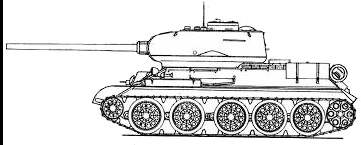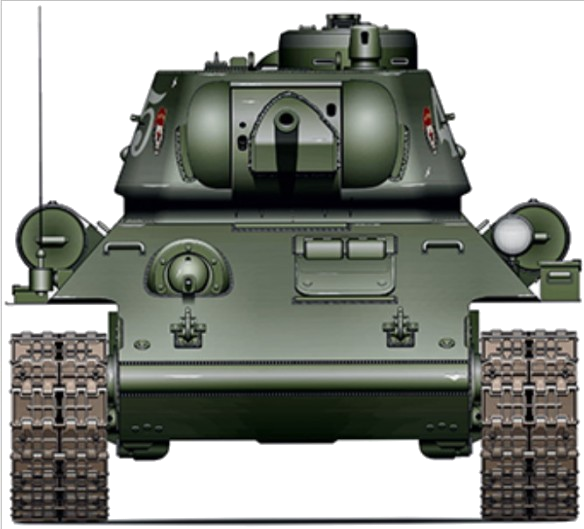T-34 Tank Specifications

This is a interactive blueprint for you to learn more about the specifics of the T-34
The T-34 was a Soviet medium tank that became one of the most iconic and effective tanks of World War II. Known for its sloped armor, powerful 76.2mm gun, and mobility, it played a vital role in turning the tide of the war on the Eastern Front. The T-34's combination of firepower, armor, and maneuverability made it a formidable opponent against both German tanks and infantry, and it became the backbone of the Soviet armored forces throughout the war.
Key Battles: Battle of Moscow (December 1941 - January 1942): The T-34 played a critical role in the Soviet defense during the German advance on Moscow, helping halt the German offensive and initiate the Soviet counteroffensive. Battle of Stalingrad (August 1942 - February 1943): T-34s were instrumental in the Soviet defense of Stalingrad, participating in both direct combat and counterattacks, which eventually led to the encirclement and defeat of the German 6th Army. Battle of Kursk (July - August 1943): In the largest tank battle in history, T-34s helped repulse the German offensive, contributing to the Soviet victory and marking the beginning of the German retreat from the Eastern Front.

The Soviet T-34: The Backbone of the Red Army
The T-34 was the most iconic and widely used Soviet tank of World War II, and is often regarded as one of the greatest tank designs of the conflict. Introduced in 1940, the T-34 featured a revolutionary combination of mobility, firepower, and protection that made it highly effective in both offensive and defensive operations. Its sloped armor design, which increased its effectiveness against enemy shells, and its powerful 76.2mm gun gave it a considerable edge over many of the early German tanks it encountered. The T-34's ability to move across harsh terrain and its robust reliability in extreme conditions earned it a reputation as a dependable workhorse of the Soviet military. The tank's design was simple enough to be mass-produced in large numbers, with over 84,000 units built by the end of the war. This allowed the Soviet Union to field vast numbers of tanks, overwhelming the Axis forces with sheer quantity and persistence. The T-34 was also highly adaptable, with several variants produced throughout the war, including command tanks and armored bridge layers. Its effectiveness in key battles, such as Stalingrad and Kursk, made it a major factor in the eventual Soviet victory over Nazi Germany. While the T-34's armor and armament were eventually outclassed by newer German tanks like the Tiger, its early war superiority, versatility, and constant evolution allowed it to remain a dominant force on the Eastern Front. Today, the T-34 is celebrated as a symbol of Soviet resilience and innovation, and remains one of the most recognized tanks in history.
